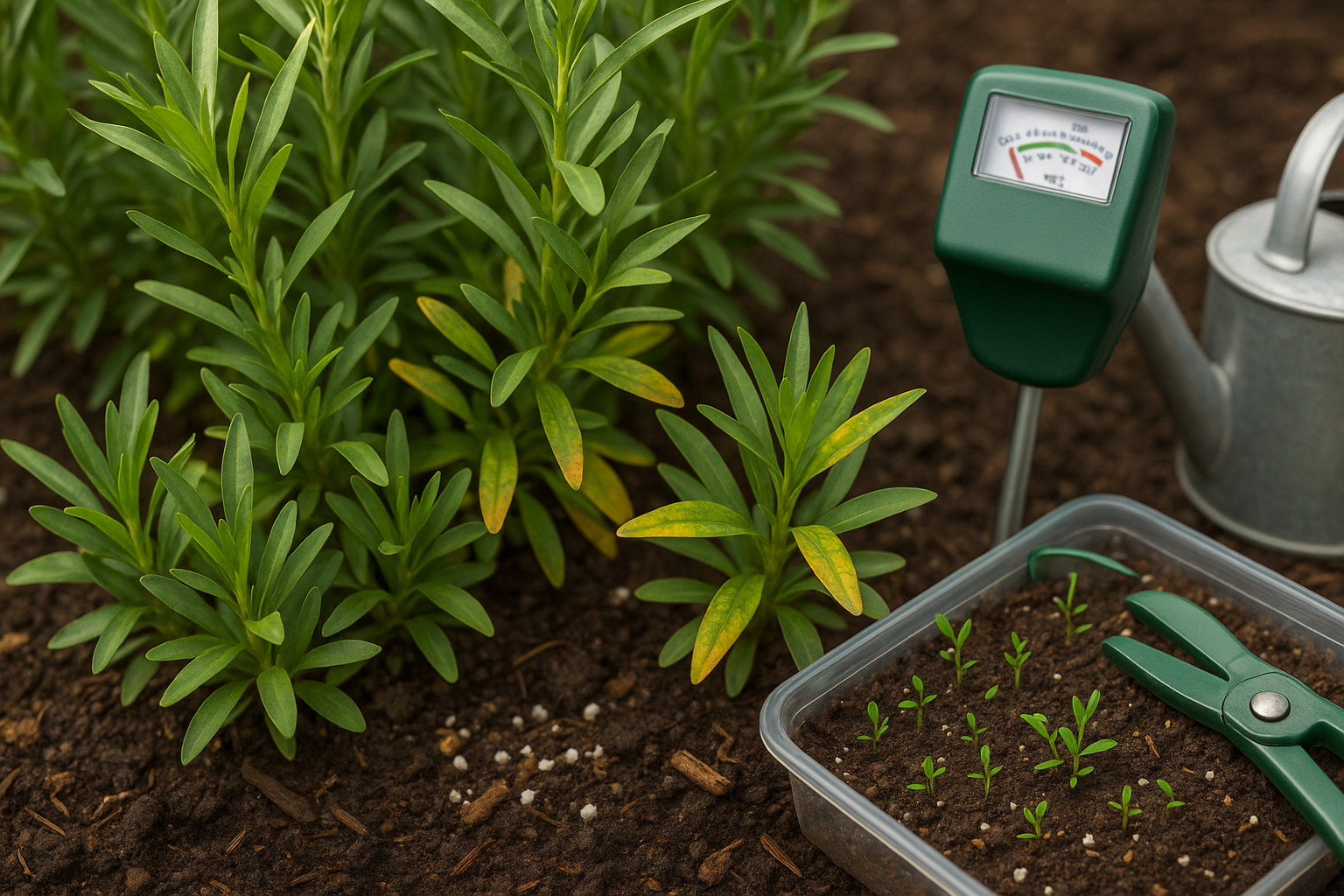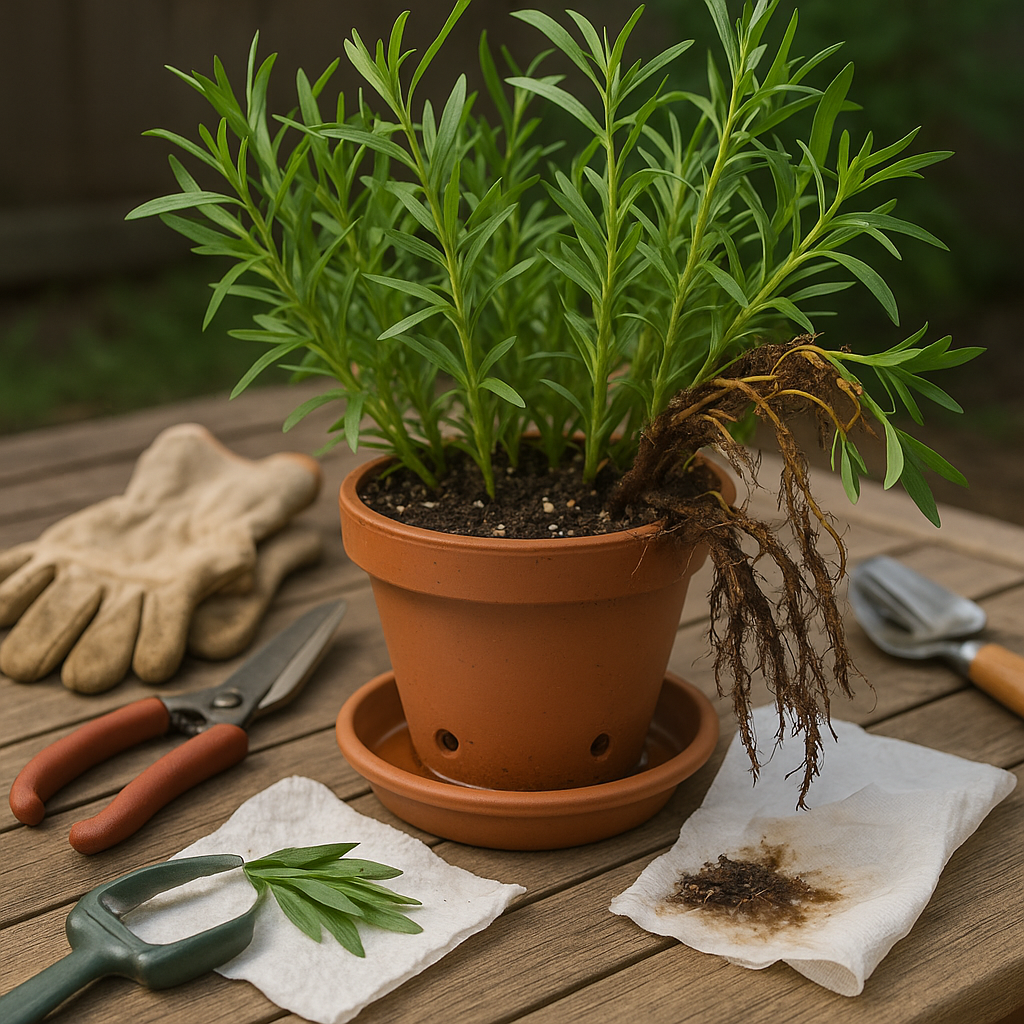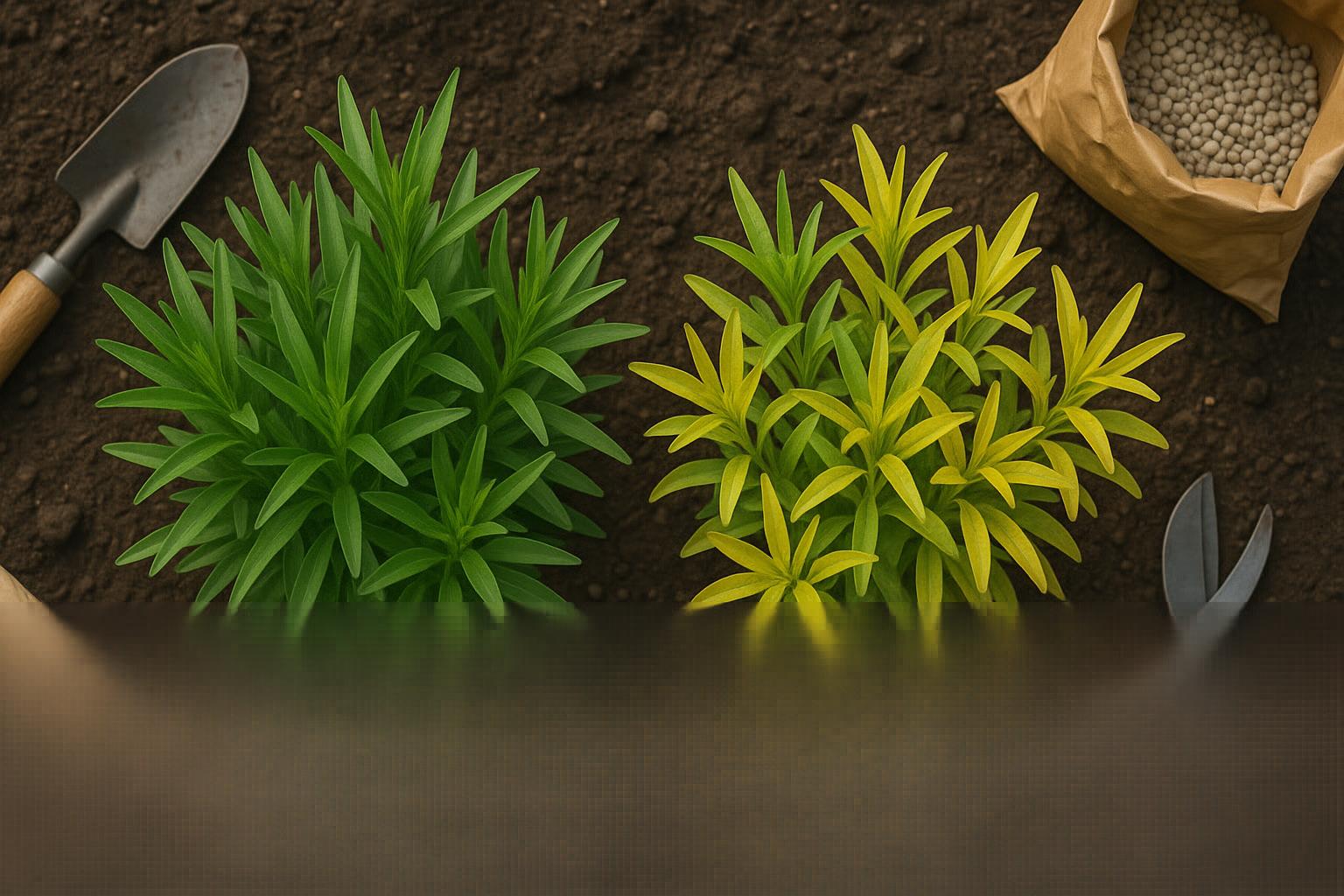Why Do Tarragon Leaves Turn Yellow?

Yellowing leaves are a common headache for home gardeners, especially when it comes to delicate herbs like tarragon. Seeing those once-vibrant green leaves fade to yellow usually means the plant is trying to tell you something isn’t quite right. It’s important to remember that yellowing is not a disease itself, but rather a symptom—a signal that your tarragon’s needs aren’t being fully met.
Overwatering is one of the most typical culprits, as tarragon prefers well-drained soil and roots quickly rot if left waterlogged. Underwatering and letting the soil dry out completely can also stress the plant, causing the same yellowing effect.
Nutrient deficiencies, particularly a lack of nitrogen, may be to blame as well. If the lower leaves are turning yellow while the new growth stays green, try mixing in a balanced organic fertilizer.
Pests like aphids or root-knot nematodes, as well as sudden temperature changes, can also prompt yellow leaves.
How to Fix the Problem
- Check soil moisture regularly to avoid over or underwatering.
- Inspect your plant for pests and treat accordingly.
- Ensure your tarragon is growing in loose, well-drained soil.
- Provide enough sunlight to keep the plant healthy.
Catching these clues early gives your herb the best chance to bounce back green and healthy.
Nutrient Deficiencies
Nutrient deficiencies are often a silent culprit behind yellowing leaves in gardens and houseplants. Learning to spot the differences can save your plants before things get worse.
Nitrogen deficiency typically causes uniform yellowing that first appears on older, lower leaves. This happens because nitrogen is mobile within the plant, so when it’s in short supply, the plant directs what little there is to new growth.
On the other hand, magnesium deficiency creates yellow areas between the veins of older leaves, while the veins themselves stay green, producing a distinct “interveinal” pattern.
Iron deficiency shows a different pattern: yellowing starts on the youngest, newest leaves, while the veins remain green. This is another form of interveinal chlorosis but appears on a different part of the plant.
If you notice these patterns, start with a basic soil test, which home garden centers or cooperative extensions often provide. Testing removes the guesswork from fertilization and helps you amend soil accurately.
- Add nitrogen-rich fertilizers for nitrogen shortages.
- Choose a fertilizer or compost blend containing magnesium or iron as needed.
- Remember that organic compost can gently improve overall soil health.
Always follow package instructions and resist over-fertilizing, as it can do more harm than good.
Overwatering & Poor Drainage

Overwatering is a common mistake with tarragon, often going unnoticed until the plant starts showing clear signs of distress. The first sign is usually yellowing foliage, which indicates the roots are sitting in water and not getting enough oxygen—a perfect setup for root rot. Root rot causes wilting, mushy stems, and an unpleasant odor from the soil.
To avoid these issues, water tarragon only when the top inch of soil feels dry to the touch. Tarragon thrives in well-draining soil, so always use a mix with added sand or perlite, especially in containers where excess water can accumulate quickly.
If your plant becomes waterlogged, gently remove it from the pot, trim away any mushy or blackened roots, and let it dry out on a paper towel for several hours before repotting in fresh, dry soil. Ensure your containers have drainage holes, and never let the plant sit in a saucer of standing water.
For potted tarragon, one deep watering per week is often enough. It’s better to err on the side of underwatering—tarragon can recover from dryness more easily than from soggy conditions.
Pests & Diseases
Yellowing leaves on tarragon often signal pests or diseases taking up residence in your herb patch. Common culprits include aphids, which cluster on stems and the undersides of leaves, sucking sap and leaving behind a sticky residue.
Spider mites are another frequent pest, especially in dry conditions. Look for tiny webs and speckled yellow or bronze discoloration on the leaves.
On the disease front, powdery mildew typically appears as white, powdery spots on leaves that eventually turn yellow and wilt.
Early detection is key—watch for unusual patterns of yellowing, curling, or deforming, and inspect for telltale signs like webbing or dark spots.
To manage these issues the eco-friendly way:
- Encourage natural predators such as ladybugs to control aphids.
- Wash plants with a gentle spray of water to dislodge mites.
- Use neem oil or insecticidal soap to help control minor infestations without harming pollinators.
For diseases, ensure good air circulation by spacing plants properly and watering at the base to keep foliage dry.
Regularly prune affected leaves and dispose of debris to prevent fungal spores from spreading.
With attentive monitoring and a few simple preventive steps, you can keep tarragon healthy and thriving without resorting to harsh chemicals.
Prevention
Keeping tarragon leaves lush and green starts with understanding what the plant needs through each season. In spring, plant tarragon in a sunny spot with well-draining soil—morning sun with a bit of afternoon shade is ideal to avoid scorching. Always space each plant about 18–24 inches apart to allow air to circulate; this helps prevent fungal diseases that can turn leaves yellow.
Prune your tarragon regularly, snipping off any older or crowded stems to encourage new growth and minimize stress on the plant. As temperatures climb in summer, add a 2-inch mulch layer around the base; this helps retain moisture, keeps roots cool, and suppresses weeds that compete for nutrients.
Regularly check your tarragon for pale patches, drooping, or spotting—these might be early signs of pests, overwatering, or nutrient deficiencies. Catching problems early gives you a better shot at treating them before leaves yellow. If you spot pests, rinse leaves with a gentle spray of water or use insecticidal soap sparingly.
Water the plant deeply but allow the soil to partially dry before the next watering to prevent root rot. With a focus on consistent care and vigilant observation, your tarragon will reward you with vibrant, aromatic leaves all season.
Can Yellow Leaves Turn Green Again? What to Do Next
Once tarragon leaves turn yellow, they’re unlikely to regain their healthy green color, even if you address the underlying issue. Yellowing usually signals stress from factors like overwatering, poor drainage, or nutrient deficiencies.
The best approach is to gently trim away the yellow portions to help the plant focus its energy on new, healthy growth. Use sharp, sterilized scissors and cut the affected leaves or stems near the base, taking care not to remove more than one-third of the plant at once.
After trimming, assess your plant’s environment:
- Ensure your tarragon is planted in well-draining soil and receives at least 6 hours of sunlight daily.
- Avoid watering until the top inch of soil feels dry—overwatering is a common culprit.
- Feed your tarragon with a balanced, water-soluble fertilizer to encourage vigorous regrowth.
- Always remove fallen yellow leaves around the base to prevent fungal issues.
By providing optimal conditions and removing damaged foliage, you’ll give your tarragon the best chance to bounce back with lush, flavorful growth.
